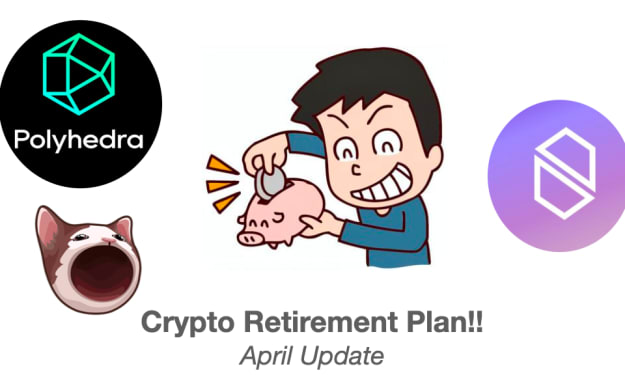Complete Guide to NFT Development: From Concept to Creation
NFT Development

In recent years, Non-Fungible Tokens (NFTs) have taken the world by storm, revolutionizing the way we perceive ownership and digital assets. NFTs are unique cryptographic tokens that represent ownership of a specific item or piece of content on the blockchain. From digital art and collectibles to virtual real estate and in-game items, NFTs have unlocked a plethora of possibilities for creators and collectors alike.
What are NFTs?
At its core, an NFT is a type of blockchain-based asset that is indivisible, irreplaceable, and holds proof of ownership. Unlike cryptocurrencies such as Bitcoin or Ethereum, which are fungible and interchangeable, NFTs each have a distinct value and cannot be exchanged on a one-to-one basis.
Step-by-Step Guide to NFT Development
If you're eager to explore the world of NFT development, this step-by-step guide will walk you through the process from concept to creation.
1. Defining Your NFT Concept
The first step is to clearly define your NFT concept. Determine what type of digital asset you want to tokenize and the purpose behind it. It could be a piece of digital art, a music track, a virtual collectible, or any other unique content that you believe holds value.
2. Choosing the Right Blockchain Platform
Selecting the appropriate blockchain platform is crucial for NFT development. While Ethereum is the most popular choice, other platforms like Binance Smart Chain, Flow, and Tezos are gaining traction. Consider factors such as transaction fees, scalability, and community support before making your decision.
3. Writing Smart Contracts
Smart contracts are the backbone of NFTs. They are self-executing contracts with predefined rules that govern the creation, ownership, and transfer of NFTs. If you're not a developer, consider seeking help from blockchain experts or using NFT development platforms that simplify the process.
4. Developing the Frontend
Creating a user-friendly frontend is essential for an engaging NFT experience. The frontend allows users to explore your NFT collection, view details, and make purchases. It should be intuitive, visually appealing, and optimized for both desktop and mobile devices.
5. Integrating with Wallets and Marketplaces
To interact with NFTs, users need cryptocurrency wallets that support NFTs. Integrate your NFT platform with popular wallets like MetaMask to provide a seamless and secure connection. Additionally, consider listing your NFTs on well-known marketplaces to increase exposure and accessibility.
6. Testing and Security Considerations
Thoroughly test your NFT smart contracts and frontend to identify and fix any bugs or vulnerabilities. Security is of utmost importance in the blockchain space, so regularly audit your smart contracts and implement necessary security measures to protect users' assets.
7. Minting the NFTs
Once your smart contracts are tested and verified, it's time to mint the NFTs. Minting creates unique tokens on the blockchain, and each NFT will have its distinct properties and metadata associated with it.
8. Preparing Metadata and Artwork
High-quality metadata and artwork play a crucial role in attracting collectors. The metadata contains essential information about the NFT, such as the artist's name, description, and attributes. Additionally, visually appealing artwork enhances the value of the NFT.
9. Launching the NFTs on Marketplaces
After minting, you can launch your NFT collection on various marketplaces. Each marketplace has its guidelines and requirements, so ensure that your NFTs comply with their standards. Consider factors like exclusivity, pricing, and promotion strategies to make your NFTs more attractive to potential buyers.
10. NFT Marketplace Strategies
Choosing the right marketplace(s) is essential to reach your target audience effectively. Research different platforms and their user bases to find the best fit for your NFT collection. Pricing your NFTs competitively, based on factors like rarity and demand, can also influence their success on the marketplace.
11. Marketing and Promotion
To gain visibility and attract potential buyers, invest in marketing and promotion. Leverage social media, influencers, and NFT communities to spread the word about your NFT collection. Engage with your audience and create a sense of exclusivity around your NFTs to drive demand.
The Future of NFT Development
As technology continues to advance and blockchain adoption grows, NFTs are poised to reshape various industries. They offer a new way for creators to monetize their digital assets while giving collectors unique ownership experiences. As the NFT space evolves, keep an eye on emerging trends and opportunities for further growth and innovation.
Embarking on NFT development can be a rewarding journey for creators and collectors alike. By following this comprehensive step-by-step guide, you'll be well on your way to conceptualizing, creating, and launching your very own NFT collection.
About the Creator
Jhonmatthew
I am a Web 3.0 Analyst who writes about blockchain, crypto, NFTs, DeFi, etc., that will let you know the latest advancements circling over the Web 3.0 space.






Comments
There are no comments for this story
Be the first to respond and start the conversation.